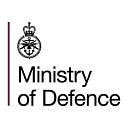Looking back at a year of the COVID Support Force
In March 2020, the UK went into national lockdown to contain the spread of COVID-19 around the country. To support the UK’s response to the pandemic, the COVID Support Force was established.
Since then, service personnel have worked tirelessly behind the scenes; carrying out testing, driving ambulances, administering vaccines and everything in between.
One year on, here are 12 things to know about the UK Armed Forces’ contribution to tackling COVID:
1. MACAs
At times of need, the Government often calls upon the military to contribute to the national response, due to their specialist skill-set and equipment. This is called a MACA — short for Military Aid to Civil Authorities. Over the past year, the Armed Forces have responded to over 200 MACA requests related to the pandemic.
Military Aid to Civil Authorities: The COVID Support Force
2. The Aviation Task Force
In mid-March, the Joint Helicopter Command stood up the Aviation Task Force.
Helicopters from the Royal Navy, Army Air Corps and RAF provided vital medical evacuation capabilities as well as the ability to deliver essential equipment and personnel swiftly to where they were needed across the UK.
3. Delivering PPE to the NHS
Service personnel have worked to distribute PPE to NHS trusts and organisations across the country.
So far, over 1.18 billion items of PPE have been delivered to NHS staff on the frontlines in England. Tens of millions more PPE items were also delivered to NHS trusts and organisations across the rest of the United Kingdom.
Providing PPE to the NHS: Lt Blackwood
4. Planning support for Local Authorities
Dozens of military planners were deployed across the UK. Working with Local Resilience Forums (LRFs) and alongside the Emergency Co-ordination Centres in Scotland and Wales, they provided expert guidance to support local communities and businesses.
My support to Mobile Testing Units
5. Ambulance support
Military personnel were mobilised to help support ambulance services. Personnel from the Navy, Army and RAF took on roles including driving emergency response vehicles and working in response centres.
Supporting the Welsh Ambulance service: hear from the driving force
6. Driving oxygen tanks
In March, Armed Forces personnel drawn from each of the three Services were trained in the necessary skills needed to drive vehicles that deliver vital oxygen and other supplies to the NHS if drivers were unavailable.
Assisting the NHS: CSgt Nick Barber
7. Mobile Testing Units
Mobile Testing Units (MTUs) were developed to help essential workers and the most vulnerable to receive COVID tests. Specialists from logistics and engineering units designed and built the prototype for the MTU in just under 7 days.
The Armed Forces played a vital role in delivering testing: setting up MTUs, distributing and collecting the swabs to be sent for processing.
Mobile Testing Units: testing for Coronavirus
8. Building hospitals
Working with the NHS and civilian contractors, a range of skilled military men and women helped construct temporary hospitals.
The military supported the build by providing infrastructure, logistics and project management advice.
Major Angela Laycock: planning a hospital build
Soldier and surgeon: Twin brothers on the frontline
9. Providing medical support
Royal Navy, Army, and RAF medics have been hard at work alongside their colleagues from the NHS to provide care to patients with the virus.
Hundreds of defence medics deployed to hospitals across the UK to work in intensive care.
In addition, thousands of general duties personnel supported in non-clinical roles, including porter duties, equipment maintenance, stores management and distribution.
Combat Medics prepare to support the NHS in Harrogate
Did you know Royal Navy nurses work in NHS hospitals?
10. Delivering mass testing
In November, service personnel began supporting the government’s efforts to increase national testing capacity.
Military personnel worked to construct testing sites inside buildings and stadiums. Alongside commercial partners and in support of NHS Test and Trace, they delivered lateral flow tests to the public.
The COVID Support Force has assisted testing across the country, including Birmingham, Nottingham, Merthyr Tydfil, Liverpool, Kent, Manchester and Scotland.
In Pictures: Sappers support COVID-19 testing in Rochester Cathedral
11. Supporting testing in schools
In January, the Armed Forces supported the Department of Education to deliver COVID-19 testing in schools.
The majority of personnel worked in local response teams, providing phone support and advice to institutions needing guidance on the testing process. Teams were also on standby to deploy at short notice to provide in-person support.
Helping with school and college testing: COVID-19
12. Administering vaccines
The UK’s vaccination programme has given the country hope of a return to normality. Since the start in December, the UK Armed Forces have been busy assisting with the vaccine rollout across the UK.
Working all around the UK, serving personnel have been trained to give the vaccine to the public.
📸 In Pictures: Training to deliver the UK’s COVID-19 Vaccine
Serving 78 years apart: a former Wren meets sailors at a vaccine centre
